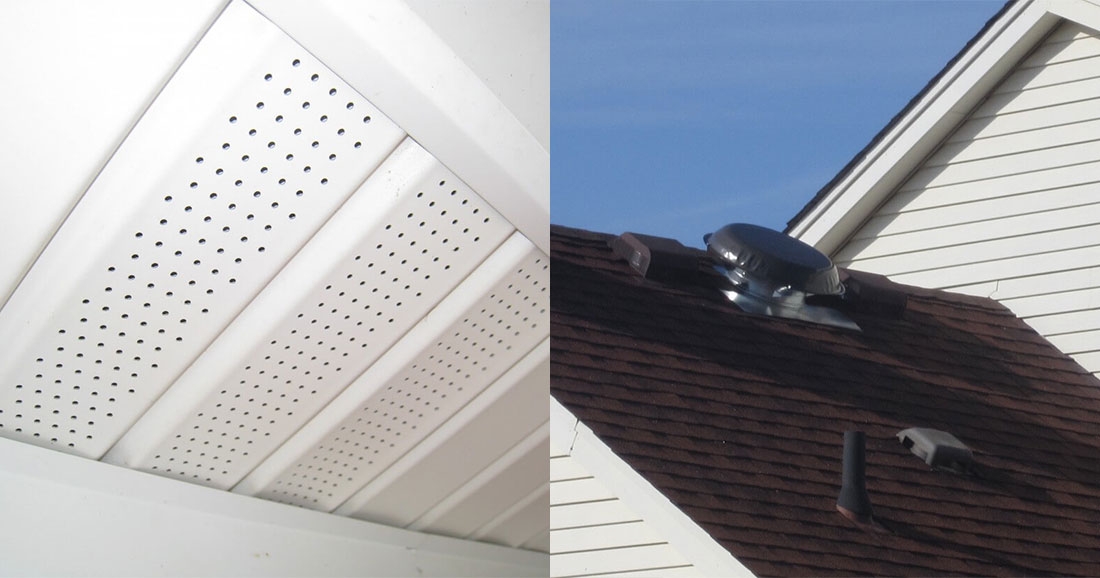Proper attic ventilation systems allow a continual flow of outside air through the attic, protecting the efficiency of the insulation and helping to lower temperatures in the living space.
It consists of a balance between air intake (at your eaves or soffits) and air exhaust (at or near your roof ridge).
The U.S. FHA (Federal Housing Administration) recommends a minimum of at least 1 square foot of attic ventilation (both intake and exhaust) for every 300 square feet of attic space. For example, if your attic is 900 square feet, you need a total of 3 square feet of ventilation. This amount should be divided equally between intake and exhaust ventilation (i.e., 1 1/2 feet of each) to insure proper air flow through the attic.
Many homes in North America do not have proper attic ventilation. Why? Because most people are unaware that attic ventilation can impact the longevity of their entire home!
In the summer, improper ventilation can cause attic heat to build in excess of 160°F. This super-heated air eventually penetrates the ceiling insulation into the living area below.
Finally, attics should be properly ventilated to help prevent ice dams in cold northern climates. During the winter, ice and snow on a roof will melt and run down the deck to the cooler eaves. This run-off can re- freeze, creating an ice dam that may force water back up under the shingles and leak into your home — causing hundreds or thousands of dollars of damage to your ceilings and walls. Adequate attic ventilation reduces the amount of initial melting that occurs on your roof, thereby reducing the chance that ice dams will form.
For more information regarding the Renaissance approach to ventilation issues please visit our ventilation page.
You may also visit GAF’s ventilation product page.



